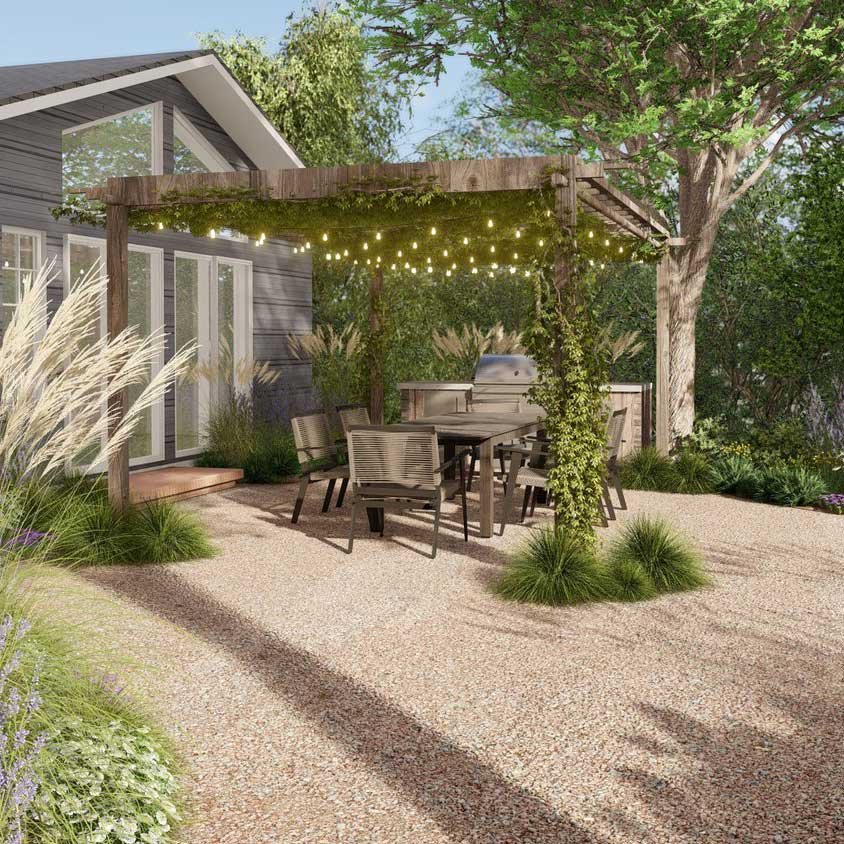Fascination About Landscapers
Table of ContentsLandscapers - An OverviewRumored Buzz on LandscapersThe smart Trick of Landscapers That Nobody is Talking About10 Easy Facts About Landscapers DescribedThe Buzz on LandscapersAbout Landscapers
- A yard feature where water is stood for by an accumulated rock product, generally a gravel or granite. These are most generally located in contemporary and Japanese garden style.- A rock or flagstone patio, path, or pathway developed without a concrete base. The base would certainly be compacted gravel and the joints would certainly be an aggregate or walkable ground cover. - A rock retaining or complimentary standing wall developed without the usage of mortar. - An underground framework that accumulate water and enables it to slow percolate right into the soil around it.
Landscape layout that is suitable with a sites' setting in both look and sustainability without unfavorable effects to the environment. Bordering in the landscape is a line of separation that produces visual passion in the garden by dividing one segment from an additional sector.
Areas can additionally have a feeling of "unit" provided by trees, other growings, fencings, or screens. The landscape near the entrance to a structure.
See This Report on Landscapers

The aspect in a landscape layout or location in a landscape that is suggested to be most popular. The prime focus can be a plant, boulder, sculpture, collecting area, or various other landscape feature. A design of yards or yard elements that emphasize straight lines, right angles and circles. Bushes or hedges situated in beds near the structure of a home or various other framework.

8 Simple Techniques For Landscapers
Rock product, either rounded or fractured, that is reasonably tiny- usually 1" or less. Low plants that are permitted or encouraged to top a location. Can refer to any type of "tough" yard elements including statuary or rocks yet a lot of generally is utilized to refer to paths, patio areas, and walls.: Elevation difference in between the degree of water in a fish pond (or the degree of the pump if it sits outside the fish pond) and the upper outlet of water which affects performance of the water pump in gph (gallons per hour). Thick shrubs or trees that form a fence, display, or limit.
A chemical utilized to regulate weeds. Fencing boards that run horizontally, typically used in contemporary or Japanese-inspired landscape layouts. Lines that specify rooms within a landscape principle. These frequently expand from edges or crucial functions of an existing structure. Correct usage of imaginary lines can aid the landscape navigate to this site really feel attached to the home and various other components.
An even more kicked back garden dominated by bent instead of straight bed lines and a much less rigid structure. Conventional PNW landscapes are casual. A plant that spreads out more than preferred, or into habitats where it does damage. Portland has a listing of intrusive plants that must not be mounted in landscapes due to the fact that they can spread to forests or rivers and be hard to manage.
The Definitive Guide to Landscapers
Can consist of head positionings and coverage, pipeline sizing, GPM specs, and products required to install this system. Certified professional who makes landscapes, educated in engineering and style as well as Get More Information in horticulture.
The professional who intends and establishes landscape jobs, usually at a property or tiny commercial level with the significant design impetus on growings. Landscape developers commonly have less education than Landscape Architects and are not certified. A completed landscape design, describing all components for the brand-new landscape. This typically takes the form of an illustration on paper.
Using several growings of the very same selection to fill up in a location in the landscape. This can reduce maintenance and water usage in the yard.
A mix of concrete, sand, and water that is used in rock masonry for setting rocks and joints. A layer of compost or bark dust used at the base of a plant. A mass planting of moss. A plant that existed in a geographic area prior to individuals started transforming the landscape.
Facts About Landscapers Uncovered
How the yard or a garden aspect is arranged in connection to an existing or brand-new attribute or to a direction. Turfs that are not mowed but expanded in landscapes as perennials.

Little round gravel. Plants that offer seasonal passion and after that pass away back in the wintertime. Annuals do not return the complying with season, however perennials do. Winter lawn that is the most usual lawn grass in this article Portland, OR and the rest of the PNW.An open roofed framework over a patio area or various other landscape feature.
The most common landscape gravel in the PNW. Area of the landscape created to deal with rain water until it can soak into the ground.
Structure constructed from timber, concrete, leading rocks, bricks or various other materials for stabilizing inclines and protecting against extreme erosion. Slim gutter. Developing a yard attribute being composed largely of rocks with growings that match and can prosper in the rough atmosphere. Sprinkler head style that turns a stream of water across an area.
All about Landscapers
